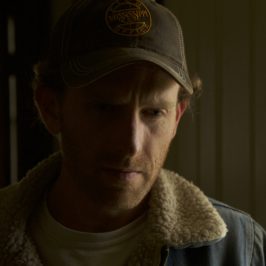The first time I ever heard the term “wild lines,” it was spoken by filmmaker Alex Cox on a Western movie set. Though I’d already made a few feature films at that point, Cox had been directing since the 1980s, with cult classics such as Repo Man and Sid & Nancy under his belt. To say the least, he had a few things he could teach me and the most valuable of these lessons was to get as much of your Automated Dialog Replacement (or ADR) recorded during production as possible.
The process of recording ADR was always labeled a post-production task in film school, not to mention something we were warned to avoid at all costs. But like most filmmaking techniques, you have to learn in the field, not the classroom. By 2016 when I worked with Cox on his feature Tombstone-Rashomon, I’d had some experience with recording and dubbing lines in the sound mixing phase. It was less daunting than I had been led to believe, especially when my sound mixer James Alire and I figured out that we could have actors record most lines through the Voice Memo function on their phones. For the record, nine times out of ten, with the right audio engineer at the helm, these smartphone-recorded lines do the trick.
This begs the question: what is the real downside and challenge of getting good ADR? In my opinion, it is the struggle of recreating the tone or feeling of the scene. Oftentimes, these recording sessions occur weeks or months down the road from when the actors first said their dialog on set. They’re in a different headspace; they may have even played multiple characters since then. Actors have a tendency to drop characters immediately after production, shedding that skin for another. Even with the best intentions and focus, it is difficult for even a skilled performer to re-live those moments from productions.
This brings us back to “wild lines.” Alex Cox made an effort to have the sound team pull his cast aside after every scene and record their dialog all over again while the camera team moved onto the next set up. Sometimes he would join in for this on-set audio recording to make sure the lines were read according to the takes or to give additional direction for options. Though I was doubtful about the effectiveness of this technique at first, I was curious enough to try it myself the next time I made a film.
It’s easy to forget in the middle of filming a movie how important little things can be later in the cutting room, like an extra shot of coverage your editor wishes you had. That was certainly the case with a Western I made in Mississippi called Blood Country, where I attempted to record wild lines whenever it was convenient but had not made it a habit… yet. Every minute counts on a film set and I didn’t know if this extra time spent was worth it until months later when my sound editor claimed he couldn’t fix certain dialog because of too much background noise. I went digging for the on-set ADR. To my surprise, not only did it fit perfectly in place of the original lines but it also preserved the nature of the performance.
With these kind of film “tricks,” I often test scenes on a few friends outside the production, asking them to point out if they recognize any dubbed lines. In this case, no one could pick out the wild lines from the production audio. Many more scenes in Blood Country were saved by these lines. There were other scenes where I wished in retrospect that we had taken more time for this process.
When something works, it only makes sense to do more of it. So for my next few films, I made this more and more of a practice. Sometimes it proves very difficult to find a quiet space for the boom operator to capture ADR. Inevitably, vehicles or people are moving about to continue work on the film. But when it’s possible, I cannot fully express the value of this process. My advice, to myself as well as others: take the time. Shut off the generator, give the crew a ten minute break, walk away with your Director of Photography, and have a whispered conversation about the next set up. It will be worth it down the road.
I will say, as one final tip, that the sooner you record these lines after the scene is complete, the better. On my most recent production, Son of a Gun, we recorded two characters’ right after the picture wrap that day but did not record the third actor in the scene until a week later. The former dialog matched perfectly; the latter was useless. After an actor completes a scene, he or she is often in a groove, able to say the dialog in almost the exact same rhythm as they did while the cameras were rolling. I have learned to take advantage of this, getting everything I need from one scene before letting my cast move on to the next.
So thank you, Alex Cox, for a good lesson learned on set. I will never grow tired of that moment when well-placed ADR passes as original audio for an audience. And I will never stop recording wild lines as long as I continue to make movies.

